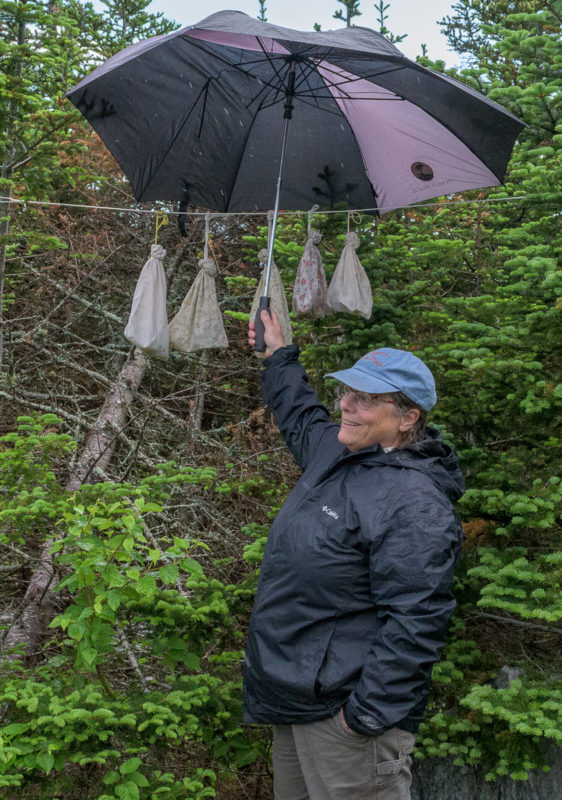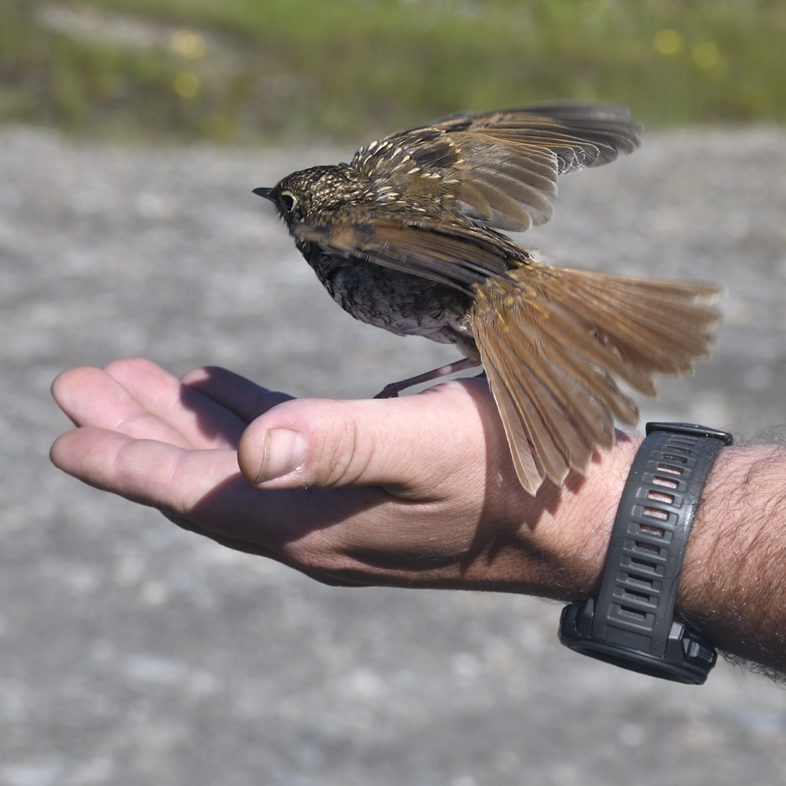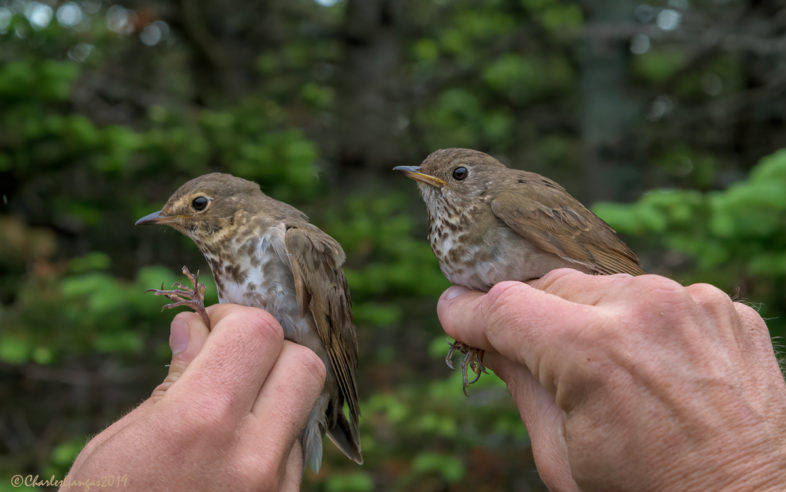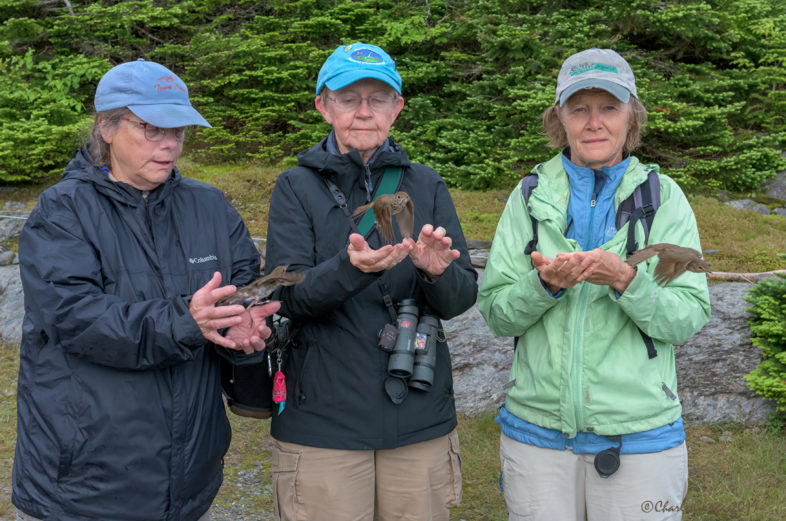
VCE friend, fellow birder and annual Mansfield visitor Ali Wagner shields birds on the VCE avian clothesline as they await banding during a brief rain shower. 2 July 2019. © Charles Gangas
Call off the conservation doomsayers, for now. Rumors of 2019’s collapsing breeding bird populations on the Mt. Mansfield ridgeline may have been exaggerated. To be sure, it’s still abnormally quiet up there, but VCE’s fifth 2019 banding session brought a modest resurgence in mist net captures. We netted 44 individuals—twice last week’s total—including several second-year (SY, or yearling) birds, an age class that has been in short supply so far this season. That result has led us to consider another possibility for the seeming scarcity of montane forest birds this year—avian breeding productivity during the 2018 summer may have been low and/or non-breeding season survivorship relatively poor, resulting in relatively few young surviving, and a relatively small recruitment of SY birds this spring.
Our 2019 banding results to date lend some support to this hypothesis. A year ago, among a total of 52 adult Bicknell’s Thrush captures, we aged 26 birds as SY and 26 as ASY (after second-year, or 2+ year-old). This season that ratio stands at 5 SY and 22 ASY birds. For Blackpoll Warbler, which are less reliably aged than Catharus thrushes, the trend is similar, though less pronounced—we captured 22 SY and 15 ASY birds in 2018, 10 SYs and 9 ASYs so far this year. Swainson’s Thrush numbers are too few to show to reveal a meaningful pattern: 6 SY and 7 ASY birds in 2018, 4 SYs and 2 ASYs to date in 2019. After several years of apparent high recruitment on Mansfield, following low red squirrel populations, this summer’s trend is striking, both in total numbers of all species and in the ratio of SY:ASY age classes. I should note here that we have yet to see or hear a squirrel on Mansfield in 2019, but the fir crop is moderately heavy. Whether a drop in recruitment has been partly responsible for this year’s overall decline in avian abundance remains to be seen. As with most ecological phenomena, an interplay of biotic and abiotic factors is almost certainly involved.
One notable (and expected) find this past week was the first appearance of a free-flying juvenile bird in our nets, as we captured a Hermit Thrush in full juvenal plumage.

A free-flying juvenile Hermit Thrush, the first juvenile of any species captured this season, heads back to Mansfield’s fir thickets after being banded.© Michael Sargent
Our week 5 mist net tally included:
Winter Wren — 1 new female with regressing brood patch
Bicknell’s Thrush — 11 (1 new ASY male, 2 return males from 2018, 8 within-season recaptures)
Swainson’s Thrush — 3 new SY males
Hermit Thrush — 1 free-flying juvenile
American Robin — 1 new male
Dark-eyed Junco (Slate-colored) — 3 new (2 males, 1 female)
White-throated Sparrow — 5 (4 new, 1 return male from 2018)
Blackpoll Warbler — 10 (4 new SY males, 1 return male from 2018, 5 within-season recaps)
Yellow-rumped Warbler (Myrtle) — 9 (1 new SY male, 1 new SY female, 1 return male from 2017, 6 within-season recaptures)

A close-up comparison of congeneric Swainson’s (left) and Bicknell’s (right) thrushes. Some evidence suggests that the two species may compete in zones of overlap, and that Swainson’s Thrushes are gradually moving upslope in montane forests of the Northeast.© Charles Gangas
As always, we enjoyed the company, assistance, and enthusiasm of several visitors, including three inveterate members of Vermont’s birding community. Now at the midway mark of our field season, and with VCE’s Mountain Birdwatch data coming in, the next 5 weeks promise to reveal enlightening insights about what is happening with montane forest bird populations.

A triple release of adult Catharus thrushes on Mt. Mansfield. From left, Ali Wagner and Sue Wetmore with Bicknell’s Thrushes, Liz Lackey with a Swainson’s Thrush. © Charles Gangas
